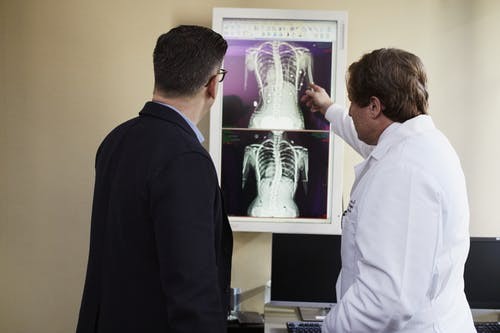Whatever your age may be, injuries from falls are serious and breaking a bone after a fall becomes more likely as you age. Many of us know someone who has broken a bone due to a fall.
While healing, the fracture limits a person's activities. Sometimes, the fracture requires surgery. Often, the person needs to wear a heavy cast to support the broken bone and to undergo physical therapy to help resume normal activities.
Dangers of Osteoporosis
People are usually unaware of the link between osteoporosis and broken bones. Known as a silent disease because it progresses without any symptoms, osteoporosis involves the gradual loss of bone tissue or bone density. This results in bones that are so fragile, they break under the slightest strain.
Falls are very dangerous for those who are unaware that they have low bone density. If the patient and the doctor fail to connect the broken bone to osteoporosis, the chance to make a diagnosis with a bone density test and to recommend a good treatment program is lost. The bone loss will continue, and other bones may break.
Prevention of Falls and Fractures
At any age, people can change their environments to help reduce their risk of falling and breaking their bones.
Outdoor safety tips
During harsh weather conditions, it is best to use a cane or walker for added stability. You can wear warm boots with rubber soles to add traction.
Check the floor surfaces in public buildings. A lot of floors are made from tile or polished marble that can be very slippery. If floors have carpet or plastic runners in place, stay on them whenever possible.
Identify the community services that can give assistance in case something happens. Look for a 24-hour pharmacy and grocery store that can take orders over the phone and deliver. It is important to use these services, especially during bad weather conditions.
Use a fanny pack, a shoulder bag or backpack to leave hands free. Stop and curbs and check their height before you step up or down. Be careful at curbs that have been cut away. The ups or downs may lead to a dangerous fall.
Indoor safety tips
Keep all of your rooms free from clutter, especially the floors. Keep the floor surfaces smooth but not slippery. When you enter a room, be aware of differences in thresholds and floor levels. Wear supportive, low-heeled shoes even when you are at home.
Avoid walking around in stockings, socks or floppy slippers. Check all carpets and area rugs, they should have skid-proof backing or are tacked to the floor, including carpeting on stairs. Also, keep electrical and telephone cords and wires out of walkways.
Be sure that all stairwells are lit and that stairs have handrails on both sides. You can place a fluorescent tape on the edges of the top and bottom steps.
For maximum safety, install grab bars on bathroom walls beside showers, tubs, and toilets. You can use a plastic chair with a back and nonskid leg tips if you are unstable on your feet when you are in the shower.
You can use a rubber bath mat when you are in the shower or in the tub. Always have a flashlight with fresh batteries beside your bed. Also, add ceiling fixtures to rooms lit by lamps only, or install lamps that can be turned on by a switch near the entry point into the room. Another thing that you can do is to install voice or sound-activated lamps.
Use bright light bulbs in your home. If you need to use a step-stool for areas that are hard-to-reach, use a sturdy step-stool with a handrail and wide steps. A better option is to reorganize work and storage areas to minimize the need for stooping or excessive reaching. You can also consider buying a portable phone that you can take with you from room to room. It gives security because you can answer the phone without rushing for it and you can call for help should an accident happen.
ALSO READ: Osteoporosis Is Fatal To Men Than Women: Fragile Bone Causes 2 Million Fractures Per Year In The US













![Sat-Nav in Space: Best Route Between Two Worlds Calculated Using 'Knot Theory' [Study]](https://1721181113.rsc.cdn77.org/data/thumbs/full/53194/258/146/50/40/sat-nav-in-space-best-route-between-two-worlds-calculated-using-knot-theory-study.png)

